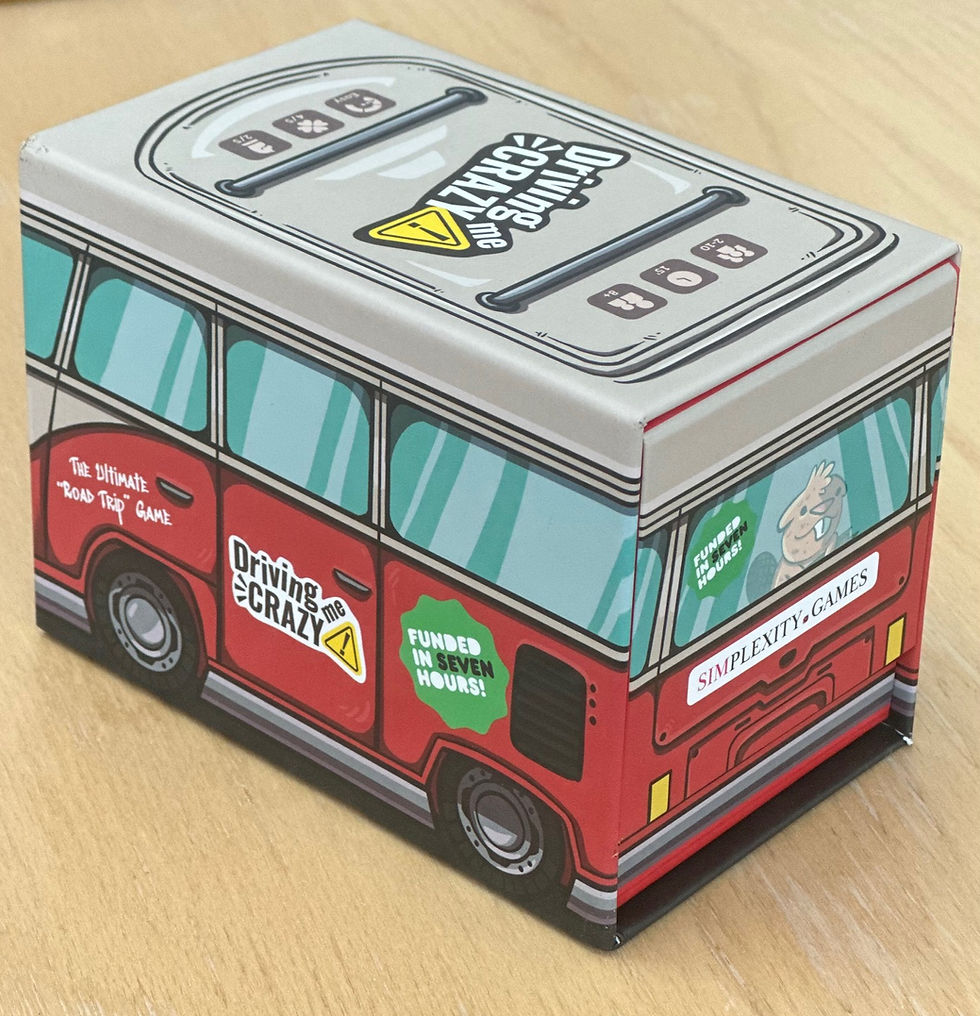Egg Add
- Board's Eye View

- Aug 27, 2024
- 3 min read
There's a now rather obscure English pun hidden in the title of this game from Korean publisher Magic Bean. The expression 'egad' has fallen out of usage but in the Edwardian period it would've punctuated teenage banter much like the 'like' of the early 21st Century. Egad had a flexible meaning but often denoted surprise, and you might well find yourself surprised by this educational and memory game.

The sturdy plastic insert in the Egg Add box also functions as the playing board. It has 25 compartments arranged in a 5 x 5 grid. There are cardboard tiles numbered 1-25 which, when placed out, serve as the lids to each compartment. The 2-4 players each have 20 'eggs' (or rather egg half shells) in their colour, and they always have a hand of four cards, each of which displays a number. On your turn, you can play one, two, three or all four of your cards, adding the numbers on the cards to take the corresponding numbered lid off a compartment and insert one of your eggs. If the compartment tho' is already full (ie: is already maxed out with four eggs in it), you must just put your egg aside where it will score a negative point at the end of the game. After your turn, you replace the number tile back over the compartment you revealed.
The game ends after each player has had 20 turns (ie: everyone has placed out all their eggs either in compartments or set aside for negative scoring). The number tile lids are all removed to reveal the eggs in the box. Players score a point for every egg of their colour that is visible when viewed from above (ie: the top egg in each compartment). If you have three or more eggs of your colour in a row, column or diagonal, you get another point for each of the eggs in that line.
That's the game in a nutshell - or should that be egg shell? It's educational in that it can help children to hone their basic addition skills but it's also a remarkably challenging memory game; much like the matching pair games that will surely be familiar to all children but with the added confusion caused by the fact that players need to keep track of the colours of the topmost eggs in each compartment, and keep a mental reckoning of how many eggs are there. It doesn't help that the numbers in the grid are random, which adds another level of potential confusion.
To play it well, Egg Add is actually quite a challenging abstract strategy game. Canny players will always be on alert when a third egg is added to a compartment because they know that the next egg in that compartment will be guaranteed to score. That's especially the case in a four-player game, where, with 80 eggs in play, the majority of the compartments will be full at the end of the game. The game becomes a little less pressured with two or three players: essentially a memory-driven Connect4 variant.
You can make the game feel a touch easier by not randomising the numbers on the compartments. You'll find it makes it slightly easier for players to keep track of what's where. On the other hand, if you're encouraging children to play Egg Add to practise their arithmetic skills, there's no reason why you can't broaden the game to allow subtraction as well as addition; indeed, you could even invite players to use multiplication and division to arrive at the 1-25 integer they are trying to target.




